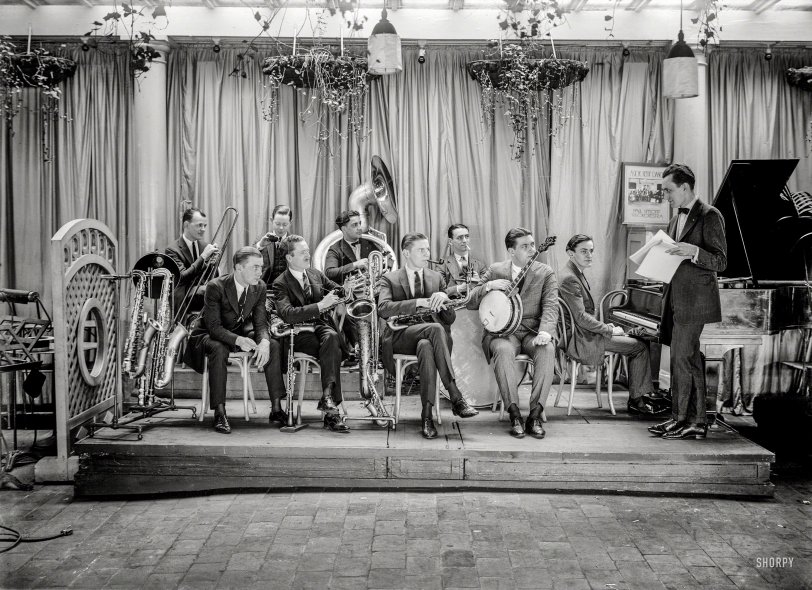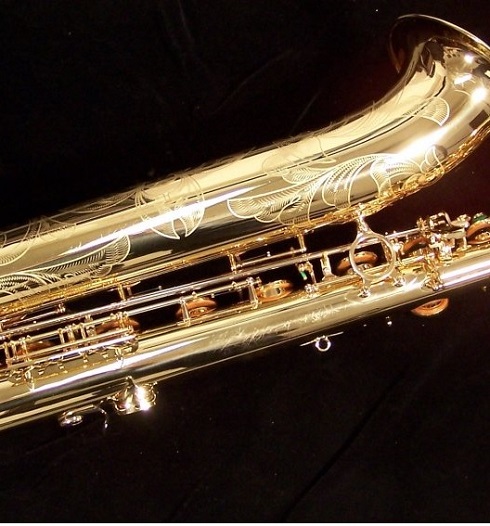


Framed or unframed, desk size to sofa size, printed by us in Arizona and Alabama since 2007. Explore now.
Shorpy is funded by you. Patreon contributors get an ad-free experience.
Learn more.

- Baldwin 62303
- Baldwin VO-1000
- Cold
- No expense spared
- Tough Guys
- Lost in Toyland
- And without gloves
- If I were a blindfolded time traveler
- Smoke Consumer Also Cooks
- Oh that stove!
- Possibly still there?
- What?!?
- $100 Reward
- Freeze Frame
- Texas Flyer wanted
- Just a Year Too Soon
- WWII -- Replacing men with women at the railroad crossing.
- Yes, Icing
- You kids drive me nuts!
- NOT An Easy Job
- I wonder
- Just add window boxes
- Icing Platform?
- Indiana Harbor Belt abides
- Freezing haze
- Corrections (for those who care)
- C&NW at Nelson
- Fallen Flags
- A dangerous job made worse
- Water Stop
Print Emporium
Take Five: 1922

New York circa 1922. "Paul Specht Orchestra, Hotel Astor Roof Garden." Take five, boys, and don't burn the house down. 5x7 inch glass negative. View full size.
Sax "ornaments"...
...mentioned by Bolek are the engravings on a satin gold-plate Buescher True-Tone baritone sax.
A gold sax cost about double the standard finish back then (satin silver plate with gold plate inside the bell). First the bell had to be engraved, the engravings masked off and the sax body sandblasted to a satin finish. It was then silver plated, and 21k coin-gold plated over the silver. The inner areas of the engravings were smoothed bright with a burnishing tool, creating the eye catching contrasting look so well depicted in the photo.
Finally, bright gold keys with all necessary pads, springs, and corks were installed. A resident musician playtested every Buescher before it left the plant.
All this for a barisax with range only to top E flat - which would be obsolete in just a few years, when instruments with high E and F keys began to become available!
Re: is this still a thing?
Yeah, pretty much. Below is a chunk of a 1992 Selmer Baritone. What's NOT so much a thing anymore is the curved soprano that's sitting in front. Very unusual nowadays. Jan Garbarek still plays one far as I know. Gives a different tone from the straight version, which is way more popular. For example (gulp), Kenny G.

These ornaments...
Is this still a thing? I've never seen that before. Fabulous!

The clarinet isn't particularly ancient
It's a Boehm system clarinet (minus the low E-flat key), which is still the standard today in most places. The Oehler system is supposed to be more popular with professional clarinetists in Germany and Austria. Both the Boehm and the Oehler systems superseded the Albert system, although Albert system clarinets are still popular for some kinds of music (I associate Albert clarinets with Central and Eastern Europe and with music from those areas, such as klezmer).
Some important players here
There's several important early jazz musicians here: Joe Tarto is the bassist, Chauncey Morehouse is on drums and Arthur Schutt is on piano. Schutt was a true virtuoso. All prominent on record, sadly they are now known only to those interested in the jazz/dance music of the period.
They sounded like this
One of their recordings: https://youtu.be/pstM687ohOQ
Sax family
The saxophone family is well represented here. From lowest to highest: baritone, tenor, C melody, alto (2), straight soprano, and either a curved soprano or a sopranino. I bet they kept their reed salesman busy!
Where Shall We Build the Stage
Find some place where the floor is curved. But don't make it a symmetrical curve.
[I suspect the roof is crowned for drainage. - Dave]
It's Prohibition!
We need to take the trumpet player into custody for pouring booze from his flask.
[That's a tobacco pouch. He's rolling a cigarette. - Dave]
I see the clarinetist only has one instrument with him, probably a common B-flat. Clarinets in A are often specified in orchestral works because they play better in sharp keys. The teensy saxophone is a soprano -- usually today they look like brass clarinets, but the curve here matches up with the other size saxes.
Further clarification on the clarinet -- it's got a really ancient key system on it. In fact it is a Klosé-Boehm system keying from 1839, around four generations behind the modern Oehler system that orchestra players use today, which was developed in 1900. The first black jazz players often bought old obsolete instruments shipped over from Europe so that may be where it came from. Even today some jazz players prefer playing on older key system instruments.
























On Shorpy:
Today’s Top 5